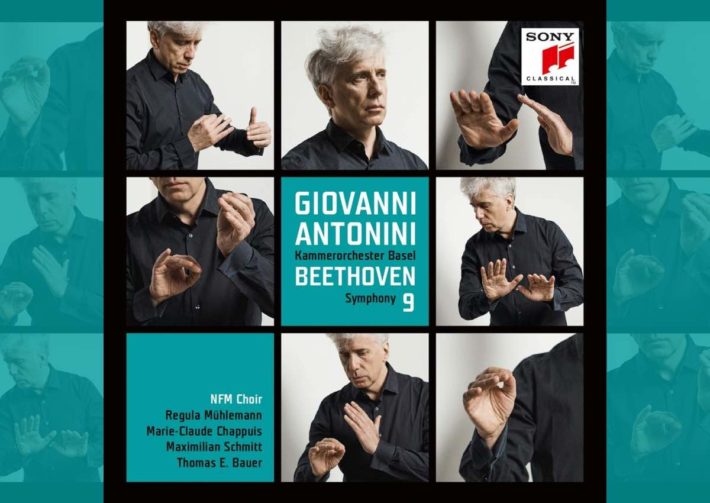All good things come to an end, and so Giovanni Antonini with the Kammerorchester Basel complete their Beethoven Symphonies cycle with this freshly conceived account of the 9th.

Antonini makes an attempt to obey Beethoven’s almost insanely hectic tempo markings, and the modest size and sound world of the Kammerorchester Basel make it not only plausible but highly convincing. Others have attempted this as well, with Herreweghe wonderful performance with “La Chapelle Royale” the most successful (Harmonia Mundi), as well as the orchestra’s compatriots from Zurich under David Zinman (Arte Nova). Harnoncourt celebrated account with the COE (Teldec) tried keeping the tempo only in the first few bars, while slowing down later on, an approach I’ve found less convincing. Here, there is not only time-keeping, but an overall drive to the tempo obedience, as it should be. This is apparent especially in the slow movement, where the flowing playing of all sections of the orchestra is marvelously capturing the beauty of the musical lines without feeling one bit pressed.
It’s worth mentioning that the Basel group play, here as well as on their Haydn Symphony albums with the same conductor, “both on historic and modern instruments”, in their own words, depending on the repertoire.
When it comes to the finale, the retrospect episodes in the midst of the basses’ recitative, is excellently done (listen to the Molto vivace comes in at 1:13, or the Adagio episode distant memory at 1:33). What I would have liked is a bit more warmth in the appearance and development of the hymn, reaching an effective but rather reserved peak.
The quartet of soloists are excellent and match the proportion and approach of the reding, with tenor Maximilian Schmitt especially impressive with his well-projected voice and clear diction in the opening sections of the Ode of Joy. The NFM Choir is well drilled, humane performer of the choral parts, though small issues of synchronization with the orchestra sometimes occur, most notably in the return of the main Ode theme at 12:05. The team is back on track soon after, however, with “Seid umschlungen, Millionen!” (12:53) dynamically executed.
This is a refreshing, direct reading of this much-recorded Symphony. Looking back at the rest of the Symphonies with the same team, this cycle can be warmly recommended as a “period practice” addition to a Beethoven collection, with excellent performances of the first, third, and seventh symphonies if one has to highlight from the entire set. A fine performance of the Triple Concerto was also released not long ago and the whole project is presented with demonstrative recording quality. The first two Symphonies were released as an album on the OEHMS label, with the rest, like this one, on Sony Classical. We had no word from Sony whether the first two will be re-recorded or released in a complete box set. Listeners can currently buy the albums separately, nonetheless.
Beethoven – Symphony No. 9 (“Choral”)
Regula Mühlemann – Soprano
Marie-Claude Chappuis – Mezzo-Soprano
maximilian Schmitt – Tenor
Thomas E. Bauer – Baritone
NFM Choir
Giovanni Antonini – Conductor
Sony Classical, CD 19075870962




















